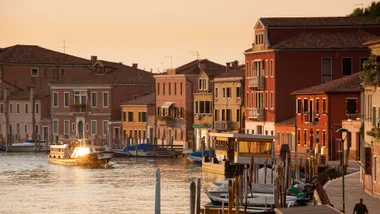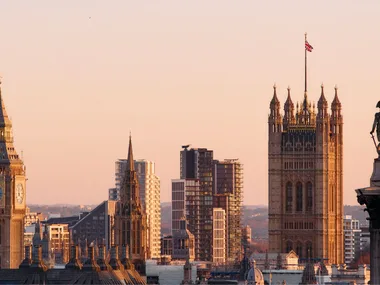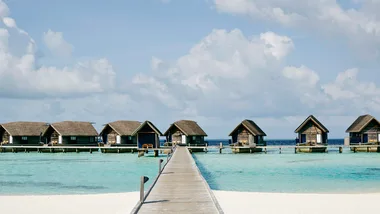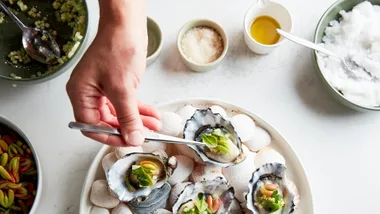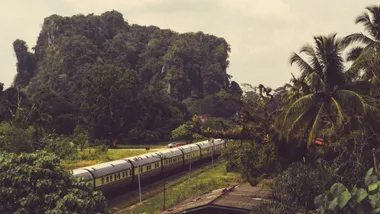Getting there
LAN and Qantas operate a codeshare route direct from Sydney to Santiago. LAN also operates a direct 90-minute flight to Punta Arenas from Santiago. Puerto Natales is a further four-hour drive from Punta Arenas; transport is best arranged through your hotel.
STAY
The definition of splendid isolation. Rooms from $400.
EAT
Chips by the kilo, beers by the glass, and it’s open until three in the AM. Carlos Bories 430, Puerto Natales, +56 61 41 1920.
Cangrejo Rojo
Nets on the ceiling, rods on the walls, fish on the plate, smiles on the faces. Santiago Bueras 782, Puerto Natales, +56 6141 2436
“Patagonia!” he cried. “She is a hard mistress. She casts her spell. An enchantress! She folds you in her arms and never lets go.” – The Poet, Bruce Chatwin, In Patagonia.
The ride to the end of the world is longer than you may have thought, and considerably cheerier. I’m driving the Ruta del Fin del Mundo, the last stretch after a flight from Sydney to Santiago that arced across the fringes of Antarctica, and then another hop down the length of Chile to its southernmost extreme. We’ve got four more hours ahead of us on the road, and yet the feeling is one of wonderment and exhilaration.
Ride the highway all the way down and the world does indeed end – this is as far down as you can go before you need an icebreaker and penguin repellent. It’s pretty much a long way from anywhere, but then that’s the point. Patagonia wouldn’t be a byword for the far-flung and the exotic if it were at the other end of the number-seven tram. The trouble you go to just to get here makes your time here seem more valuable. Patagonia’s isolation is both a magnet and a shield, drawing a certain kind of traveller just as it has protected the region from development. It was perhaps one of the reasons the Mapuche, the people indigenous to south-central Chile and south-western Argentina, were never completely subjugated by the Spanish, nor by the Inca before them.
The Ruta del Fin del Mundo is blacktop, but it typically frames a scene otherwise unmarked by man. These three hours on the road take me from Punta Arenas, the nearest proper airport, to Puerto Natales, the town where I’ll be staying. It’s in the Última Esperanza, or province of last hope. “Patagonia” describes the southernmost tip of South America, and the border between Chile and Argentina runs north-south right through it. I ask one of my travelling companions, a native of Santiago, what the difference is between Chilean and Argentinean Patagonia.
“Los Andes,” he says, gesturing. The range, which looms and recedes with the meanderings of the road, separates it into Atlantic Patagonia and Pacific Patagonia. For most of the drive on the Pacific side, the landscape is flat, unbroken by trees, and then we crest a rise or round a bend and the brooding snow-covered peaks veer back into view and the illusion dissolves.
After Magellan, Bruce Chatwin was the most famous visitor to these parts. The defining picture of Patagonia in the Western (and Northern) mind was the one he painted in his 1977 book In Patagonia. “Have gone to Patagonia,” read the message he cabled his colleagues back at the Sunday Times in London, the last word heard from him for months on end.
In Patagonia has been called the book that revolutionised travel writing, and a big part of the thrill of being in Patagonia is treading in Chatwin’s footsteps. Some of the things he saw remain unchanged. The gardens of Puerto Natales are still choked with docks and cow parsley; the engine that used to run the men of the town to the meatworks still sits, painted red and scrawled now with graffiti, in the plaza. The families of the islanders of Chiloé who migrated here nearly a century ago to work on the killing floor provide both the talent and the customer base for a handful of Chilote restaurants.
Chatwin came here looking for a brontosaurus. A scrap of skin (“a small piece only, but thick and leathery, with strands of coarse, reddish hair”) kept in a glass-fronted cabinet in his grandmother’s dining room had obsessed him as a child. When he grew older he learned that it had in fact been a piece of a mylodon, a giant ground sloth that became extinct 10,000 years ago. It had come into Nanna Chatwin’s possession via her cousin Charley Milward, who had been the British consul in Punta Arenas when a well-preserved cache of skin and bones had been found in a cave on Last Hope Sound in Chilean Patagonia.
The mylodon looms large in Puerto Natales. Literally, in fact, in the form of the 10-metre high life-sized statues that stand at the gateway to the small fishing town. There’s another one in Cueva del Milodón Natural Monument, the large, only mildly spooky cave half an hour north-west where the remains were found in 1895. Like the other attractions in this part of Patagonia, it’s nicely set up with walkways and bilingual signage, which also details the evidence of prehistoric human occupations here, along with the existence of a species of dwarf horse, and a sabre-toothed cat called a smilodon.
In a case by the towering, bear-like concrete mylodon, we find bones (originales), claws (réplica) and fur (originales). The mylodon also lives on in the province’s gift shops (carved, timber), street signs (Comic Sans), and the local cab company (Radio Taxi el Milodón).
But most travellers who come to Puerto Natales and this corner of Patagonia aren’t giant-sloth tourists or students of Mylodontidae. They’re here for that other towering wonder, the Torres del Paine. It’s tempting to see “Towers of Pain” in the shape of those words, especially if you’re contemplating scaling them, but the paine in this instance is pronounced “pie-nay”, a dialect word for blue. It’s just one of the many colours shown by the three tall fingers of bare granite rising apart from the mountains that form the most striking part of the Cordillera del Paine, a spur of the Andes that shoots from the Patagonian steppe.
The park is a small wonder of the world, not least in its diversity. National Geographic called it the fifth most beautiful place on earth; it’s certainly striking. Some parts recall the Scottish Highlands, while the buckled and curved geology and diagonal strata revealed by some of the ice-sheared cliff faces remind me of the more dramatic reaches of the Flinders Rangers. In the space of an hour you can run from steppe to Magellanic rainforest to the polar grandeur of the glaciers of the Southern Ice Field. We stop to gawk at the vivid colour of Lake Sarmiento, fringed by structures called thrombolites – calcium carbonate reefs precipitated by blue-green algae in the hypersaline environment created by a body of water with inflows but no outflows. As though called by a silent director, a gaucho gallops across the vista, his horse picking its way nimbly through the thorny scrub.
Guanacos are not in short supply. Cinnamon of coat and long of lash, this cousin to the llama, though vulnerable elsewhere on the continent, is found in large numbers in Patagonia, particularly in the park. They’re pretty relaxed around people, so good pictures aren’t hard to take, but you’re advised not to get too close because they’re skilled and accurate spitters. I’m sorry to report that I didn’t see any pumas (they’re active at night), but the striped emu-like rhea and cheeky caracaras are much in evidence, and we pass Chilean flamingos by the flock. Way above, against the dramatic backdrop of the saucer and zeppelin shapes of lenticular cloud, noble condors wheel and glide.
The walk around Grey Lake will stay with me forever. First you tramp through the woods, crossing rope-and-plank bridges over rushing rivers and through bowers of lichen-tufted southern beeches, ducking the trunks of wind-bent coigües. In the underbrush, the plants are tenacious; thorns are a theme. And then everything opens out onto a beach, or at least the sort of beach you might find on the banks of the Styx. Its beauty is terrible and awe-inspiring. The swathe of dark sand is framed by mountains, with a glacier peeking in at the corner. Blue icebergs rear out of the water, and ice washes onto the shore, gathering in the corners like Esky slush. A hand-painted sign announces, rather redundantly, “NO ESTA PERMITIDO NADAR”.
No swimming? No kidding.
A note about the cold: it’s not as bad as the wind. Extreme weather is one of the mainstays of the region. “Any day is a four-season day,” says Cote Marchant, our guide. “We need to be prepared for everything.”
Marchant has lived in Patagonia and worked as a guide for years, tackling the full spectrum, right up to sea kayaking and extended trips way past the snowline. She’s seen first-hand a change in who comes to the region and how they travel.
“People used to come just for the wildlife and the isolation,” she says. “Now they come for the wilderness, and they want to be right there in it, but they also like hot showers at the end of the day and a glass of good wine.” The new Patagonian adventurer wants to explore the landscape up close on foot, on mountain bike, or in sea kayaks, and get as mucky as the backpackers and hostel-dwellers, she says, only they’re not averse to shucking their foul-weather gear when the sun goes down, and sinking into a deep freestanding tub in a beautiful room. The hostels and cold-water campsites are still here and still busy, but now there are other options.
The option that appeals to me most is The Singular, a hotel that would be a curiosity anywhere but on the outskirts of a pioneer crab town in Patagonia is downright remarkable. Stranger still are its origins. I’ve stayed in hotels that used to be hospitals or schools and, on one memorable occasion, in a former prison, but a luxury resort fashioned from a meatworks is a first.
Built a hundred years ago, the Frigorífico Puerto Bories complex processed the sheep that were (and are) raised in Patagonia in vast numbers, tanning their hides and freezing their meat for export to Europe and the US. It held 180,000 carcases and 850,000 tonnes of produce, with 600 workers processing 3600 animals a day at its peak. The site was rehabilitated and turned into a hotel in 2011, and the vast wheels and pistons of its gargantuan Victorian machinery, shipped here from Birmingham, London and Derby, now gleam in the yawning spaces built of British brick that join the new accommodation wing to the common buildings.
The hotel sits apart from the town – 10 minutes’ drive and a world away. The lake it fronts is a deep-water port, carved down hundreds of metres in the last glaciation. Walk its banks by The Singular and among the pebbles, the driftwood and the blue shells of mussels you’ll find well-worn shards of bone. Production here ceased in 1985 but the tunnel to the wharf still holds a faint whiff of lanolin.
“PARKING” advertises one downtown Puerto Natales hostel among its attractions, “HOT SHOWERS. INFORMATIONS. LEASE OF CARPS.” I’m not sure about the carp-lease situation, but The Singular’s informations are top-notch, and very hot, very large showers are just the beginning of the mod-cons. There’s also a small spa with a heated pool attached. Most of the pool is inside, but you can swim under the glass and emerge in a section that’s open to the elements looking out over the lake. Geese wander past, looking official and ruffling their feathers.
The rooms are handsome and plush, with the occasional industrial reference in the fittings. The look is attractively spare, but there are touches of luxury where you can feel them, like in the heated bathroom floors and the quality of the sheets. The WiFi is that rarity: the sort that simply works.
There’s also plenty on offer to feed the mind. “Our focus isn’t just the park,” says Gonzalo Bruna, The Singular’s expeditions manager. “It’s the fjords, the town, the land. Our expeditions are about people and culture and history as much as they are about wildlife.” In addition to fly-fishing and birdwatching and climbing and trekking, there’s amateur palaeontology to indulge in and glaciers to sail around. You might spend a day on a traditional estancia in the hills, or head to the docks to check out the crab fishery.
All that trail-running and kayaking and horse-riding works up an appetite. Chef Laurent Pasqualetto runs both the hotel’s eponymous large smart-casual restaurant, which serves the Euro-local likes of hare escabeche with onions and carrots, and a clafoutis of (local) rhubarb with ice-cream, and the newer El Asador, a smaller, informal Patagonian-style grill in the old smithy, that specialises in lamb, beef, rabbit and guanaco simply cooked over the coals. Over in the bar you may encounter Andy, a Spanish-speaking, Yorkshire-born bartender. He likes to shake his Martinis, put a little orange in his whisky sours, and makes the best Pisco Sour I’ve had in Chile.
The town of Puerto Natales, though not a magnet for destination-diners, is not without its charms. Here the buildings hug low to the ground, many of them faced in metal. One friend says it looks like it could be in Alaska (Cicely, say), another sees a resemblance to the Faroe Islands. It was founded to support the meatworks but now survives on tourism and fishing. Of the pubs, the friendly Baguales is of note because it brews its own beer (drinkable) and sells “mega papas”, a kilo of chips smothered in fried chicken, bacon and melted cheese (only for the brave).
For something a bit more considered on the plate, allow me to recommend the small, sweet and lovely Cangrejo Rojo, a “café marino”, operated by marine biologist Francisco Weibel and his wife, Nury Lobos, a Colombian-born fishing engineer. They’re not chefs by trade but they know their seafood, and it’s good: slices of raw conger eel with sarsaparilla berries, a bit like a tiradito, say, or rolled fillets of pejerrey, reminiscent of garfish. They do a fine version of chupe, a homey Chilean specialty that’s halfway between a chowder and a gratin, and there’s crabmeat here in abundance, whether in a chupe or simply fried and served with a citrus mayo. The sharp local fruits make an appearance again at dessert in Lobos’s tarts of rhubarb and sarsaparilla.
But by far and away the best and most memorable meal I find in Patagonia is a lunch cooked by Hernan Rodas Fonseca. Rodas has worked this land in the saddle for most of his 72 years, and he cooks his lamb in the classic gaucho method, low and slow, the whole beast spatchcocked across an iron cross. We’re here on a small island in a lake far from care on an expedition organised through the hotel, and while Rodas cooks, we stand around the stove in the island’s lone cottage and taste some beers with a local brewer. When the time comes to eat, we plate up the lamb with chancho en piedra, a salsa of lime, coriander and garlic, and charquicán, a Chilean comfort food comprising potato, pumpkin and carrot cooked soft with peas and jerky. Rodas, though, prefers to eat by the fire, pulling away the best pieces from the lamb’s neck with his knife. The meat we share is deeply flavoured, salty, and carries the tang of the wild herbs of the steppe.
The young Bruce Chatwin had fixated on Patagonia as the safest place on earth, a place far from Cold War worries. “I pictured a low timber house with a shingled roof, caulked against storms, with blazing log fires inside and the walls lined with the best books,” he wrote, “somewhere to live when the rest of the world blew up.”
Here, with the fire smouldering before us, eating with the wind in the trees and the smoke blowing out to the water, it’s easy to think Chatwin had it right. From this vantage, the end of the world is something to savour.

 Araceli Paz
Araceli Paz


